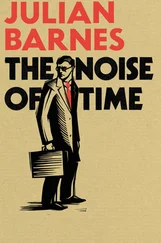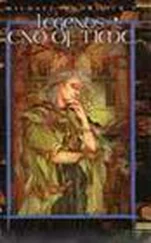This book has been one long, sustained effort to shed redundant concepts. We now are down to two: a static but well-behaved wave function and the configuration space. The latter is Platonia, our pitch. I look at it as a child might – what a lopsided thing it is! However I turn in my mind the notion of ‘thing’, the space of all things constructed according to one rule comes out asymmetric. All the mathematical structures built by physicists to model the world have this inherent asymmetry. One rule creates triangles, but they are all different. No matter how you arrange them, their configuration space falls out oddly. Have another look at Triangle Land (Figures 3 and 4), which is just about the simplest Platonia there can be. And what does it look like? An upturned Matterhorn. Imagine trying to play football on that pitch.
The barest arena in which we can hope to represent appearances is the set of possible things. If we banish things, we banish all the world. So we have kept things and made them the instants of time. As we experience them, they are invariably time capsules. This is the principal contingent fact of existence: the wave function of the universe, playing the great game in timelessness, seeks and finds time capsules. What all-pervasive influence can put such a rooted bias into the game? The explanation seems to scream at us. Platonia is a skewed continent.
My conjecture is this. The Wheeler-DeWitt equation of our universe concentrates any of its well-behaved solutions on time capsules. I suspect the same result would hold for many different equations and configuration spaces. The inherent asymmetry of the configuration space will always ‘funnel’ the wave function onto time capsules.
I could fill up pages with hand-waving arguments for why this should be so, but they would baffle the non-specialist and offend the specialist. I shall attempt only to show that the ‘seeking out’ of time capsules need not depend on time and a special initial condition. Stationary equations may also do the trick. I may also mention that if, as explained in the Notes, the universe can, in accordance with my recent insights, be understood solely in terms of pure structure, so that absolute distance plays no role, it will certainly be possible to make the arguments of the remaining parts of this chapter more precise and convincing.
TIMELESS DESCRIPTIONS OF DYNAMICS
In Part 2, we saw that Newtonian classical histories of the universe can be described in a timeless fashion as ‘shortest’ curves (geodesics) in configuration space. All histories that have the same energy can be described this way. This fact is often helpful, simplifying the solution of problems. In quantum mechanics something similar happens.
Physicists often want to know what will happen if some atomic particle is shot at a target of other particles. One way is to represent it by a ‘cloud’ of wave function – a wave packet – that moves towards the target. As Schrödinger showed, such a packet can be formed from waves corresponding to a relatively small range of momenta and energies, and it moves with a more or less definite velocity. When it reaches the target, it is ‘scattered’ – the wave function flies off in many directions. Physicists use the time-dependent Schrödinger equation to find the probabilities for these various directions. In this picture, the wave packet moves and is in different positions at different times. This is rather like the representation of history in Newtonian physics as an illuminated spot moving along a curve in configuration space.
There is, however, an alternative method. A single static wave covers the whole region – before, at, and after the target – traversed by the wave packet in the first picture. This one wave satisfies the stationary Schrödinger equation and corresponds to a particle with the average momentum and energy of the packet. As far as the target, the static wave is regular and plane, but at the target its pattern gets broken up. The interesting thing is that if we examine the pattern of the disrupted (but still static) wave in the region behind the target, we can deduce from it the probabilities with which the particle will be scattered in different directions in the first picture. I shall not go into details; suffice it to say that the one static wave is a kind of record of all the successive wave-packet positions in the first description. This is closely analogous to the way in classical physics in which the curve in the configuration space is a summary of all positions of the illuminated spot taken to represent the system at different times.
Interestingly, Max Born made his pioneering scattering calculations in the newly created wave mechanics by the second method. At that time Schrödinger had not even published his time-dependent equation. All the great early discoveries in wave mechanics, including Born’s statistical interpretation of the wave function (which he came to by mulling over his scattering calculations), were made before the supposedly more fundamental and ‘correct’ time-dependent equation had been found. I find this suggestive. It strengthens my belief that all the physics of the universe can be described by a timeless wave equation. In fact, Mott also used the stationary equation to obtain the alpha-particle tracks. That timeless equation can locate time capsules.
But ‘can’ is not ‘must’. The fact is that Mott used a special technique, always followed in such calculations, that mimics the wave-packet behaviour. The answer is to some extent simply assumed rather than truly derived and demonstrated. This can be done because the time-dependent and stationary Schrödinger equations have different structures, the latter having an extra freedom not present in the former. At each stage of his calculations, Mott systematically exploited this extra degree by making a definite kind of choice. This choice was not imposed by the mathematics but was made, probably instinctively, to match his temporal intuition. In fact, Mott’s solution is not a proper solution at all but a kind of bookkeeping record of how the real process would unfold in time. In addition, the condition corresponding to low entropy was also assumed rather than derived.
My conjecture seems to rest on a shaky basis. But there is more than one way of looking at this. The arguments for a timeless quantum universe are strong. The timelessness of the Wheeler-DeWitt equation, found by well-tried quantization methods, reflects the deepest structure of Einstein’s theory. Quite independently, we never observe anything other than time capsules – the entire observable universe is marked, at all epochs, by profound temporal asymmetry. If we trust the equation, our observations tell us the outcome of a mathematical calculation performed by the universe itself using that equation. For that is what the contingent universe must be: a solution of the equation. If what we observe – a profusion of time capsules – is a representative fact, then the equation does concentrate ψ on time capsules.
We can take Mott’s solution more seriously. Several points can be made. Situations in which part of a quantum system is in the semiclassical regime, so that Hamilton’s ‘light rays’ are present as latent or even incipient classical histories, are rather common and characteristic. The Heisenberg-Mott work then shows that such latent histories will become entangled with the remaining quantum variables, which must, in some way, reflect and carry information about those histories. What is not clear is whether the histories will exhibit a pronounced sense of direction – an arrow of time. That, above all, is put into the Mott solution by hand.
Also relevant is the mathematically somewhat suspect procedure known as successive approximation used to construct the Mott solution. There is no global arena in which the cloud chamber resides. Its atoms are effectively located in empty Euclidean space, and Mott could keep on adding approximations without worrying about their behaviour far from the cloud chamber. He was not constructing a genuine well-behaved solution, in which one must ensure the behaviour is right everywhere, especially at infinity. Instead, Mott used infinity as a kind of dustbin. This could not be done in a realistic situation, as I would now like to show.
Читать дальше












